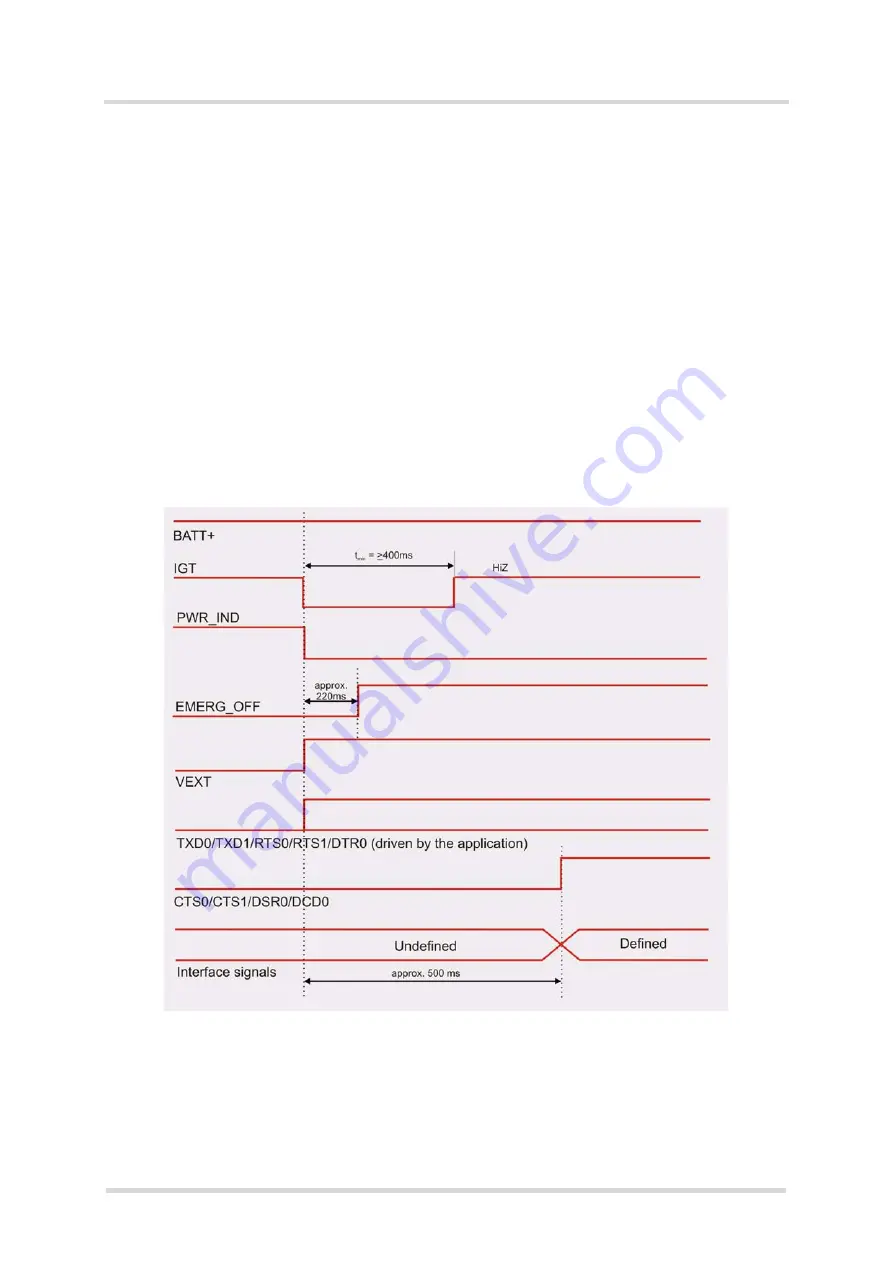
EES3 Hardware Interface Description
3.3 Power Up / Power Down Scenarios
71
EES3_HD_v01.100b
Page 28 of 118
2009-08-12
Confidential / Released
Assertion of CTS indicates that the module is ready to receive data from the host application.
In addition, if configured to a fixed bit rate (AT+IPR
0), the module will send the URC
“^SYSSTART” or “^SYSSTART AIRPLANE MODE” which notifies the host application that the
first AT command can be sent to the module. The duration until this URC is output varies with
the SIM card and may take a couple of seconds.
Please note that no “^SYSSTART” or “^SYSSTART AIRPLANE MODE” URC will be generated
if autobauding (AT+IPR=0) is enabled.
To allow the application to detect the ready state of the module we recommend using hardware
flow control which can be set with AT\Q or AT+IFC (see
for details). The default setting of
EES3 is AT\Q0 (no flow control) which shall be altered to AT\Q3 (RTS/CTS handshake). If the
application design does not integrate RTS/CTS lines the host application shall wait at least for
the “^SYSSTART” or “^SYSSTART AIRPLANE MODE” URC. However, if the URCs are neither
used (due to autobauding) then the only way of checking the module’s ready state is polling.
To do so, try to send characters (e.g. “at”) until the module is responding.
See also
"Signal States after Startup”.
Figure 5:
Powerup with operating voltage at BATT+ applied before activating IGT
For details on how to use EMERG_
OFF
to reset ap-
plications or external devices see
.
















































